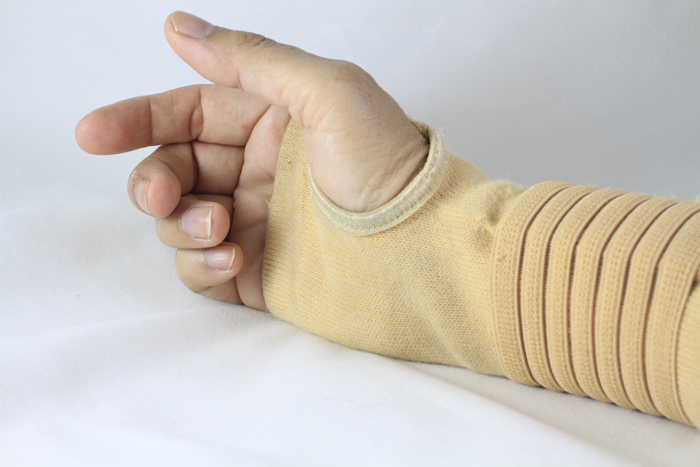Wrist Arthroscopy Surgery in Tardeo, Mumbai
Wrist arthroscopy is a surgery that uses a small camera to examine the parts of the wrist joint. The camera used is known as an arthroscope. Through this process, the doctor can diagnose any problems in the wrist without making large cuts in the skin and tissues.

What is Wrist Arthroscopy?
In wrist arthroscopy, the doctor makes small incisions in the wrist, which are less than an inch long. A tiny camera is inserted through the incisions along with several other surgical devices. The images are then projected onto a screen, looking at which the doctor diagnoses the problem. This is performed to diagnose various wrist conditions such as chronic wrist pain, fractures in the wrist, carpal tunnel syndrome, and ligament tears.
Causes of Wrist Arthroscopy
Wrist arthroscopy is generally performed in the following conditions:
- Injury: If you have sustained a severe injury due to a fall or the twisting of your arm, or you experience swelling in the wrist or clicks that do not go away after an injury.
- Ganglion removal: It is a small sac filled with fluid in the wrist joint. It can be painful and reduce the mobility of the wrist joint.
- Ligament tear: Tears in the ligaments can be repaired through this surgery.
- Carpal tunnel syndrome: In this condition, the nerves passing through the tissues and bones of the wrist become swollen. Through wrist arthroscopy, the nerves can be made larger, which relieves the pain.
- Triangular fibrocartilage complex tear (TFCC): This is a tear in the cartilage of an area of the wrist known as TFCC. Wrist arthroscopy is used to treat it.
These conditions mean that there must be an internal injury in the wrist. Wrist arthroscopy is performed to diagnose it.
Risk Factors Involved in Wrist Arthroscopy
There are various risk factors involved in this procedure. Though the procedure is completely safe, certain risk factors must be considered. They are:
The risks of anesthesia given before the surgery may cause:
- You might experience breathing problems.
- It may cause a blood clot or an infection.
- Some people experience allergic reactions to the medicines.
The risks of wrist arthroscopy are:
- You might experience weakness in your wrist.
- There is a chance of an injury to the tendon, nerve, or blood vessels of the wrist.
- Sometimes, the procedure cannot repair the damage done inside the wrist.
- The procedure may not be able to relieve the symptoms.
When to See a Doctor?
If you experience severe wrist pain or have an injury or fall, it is advisable to consult a doctor. Also, if you have ligament tear or ganglion damage, you should see a doctor. The doctor will examine your wrist and recommend a wrist arthroscopy based on your condition.
You can request an appointment at Apollo Spectra Hospitals, Tardeo,Mumbai.
Call 1860 500 2244 to book an appointment.
Preparing for the Procedure
Before the surgery, certain things need to be taken care of:
- You need to inform your doctor of your medication history.
- Refrain from smoking or alcohol consumption before the surgery.
- If you have diabetes or heart disease, inform your doctor beforehand and get a checkup before the surgery.
- Also, tell your doctor if you have a cough, flu, or any other illness. The surgery will be postponed in this case.
On the day of the surgery
The following can be done on the day of your surgery:
- Follow the instructions given by your doctor regarding when to eat and take medicines before the surgery.
- It is advisable to arrive at the hospital on time and take the drug or medicine given by your doctor.
- The doctor will administer local anesthesia to your arm and hand. The surgery is then performed, where the doctor makes small incisions and examines the bones, ligaments, and cartilages of your wrist. The doctor then performs surgery if any damage is found in the wrist tissues or cartilage.
What to Expect After the Surgery?
After the surgery, you can probably go home in a few hours. The following things need to be considered for faster recovery:
- Keep the wrist elevated for the first 2-3 days after surgery.
- You will need to wear a splint for around 1-2 weeks to keep your wrist stable.
- Keep the bandage clean and dry to avoid infections.
- Apply ice to relieve the swelling.
Conclusion
Wrist arthroscopy involves making small cuts in the wrist, meaning lesser pain compared to other surgical procedures. Also, there is faster recovery and fewer complications. So, it is a useful, hassle-free process.
At least 2 weeks off of work is necessary after surgery.
Physical therapy is of the utmost importance for recovery from surgery.
Local anesthesia is used to numb the hand and arm. So, you can rest assured that you will not feel any pain during the procedure.
Symptoms
Our Top Specialities
NOTICE BOARD
CONTACT US
CONTACT US
 Book Appointment
Book Appointment


.svg)
.svg)
.svg)
.svg)








